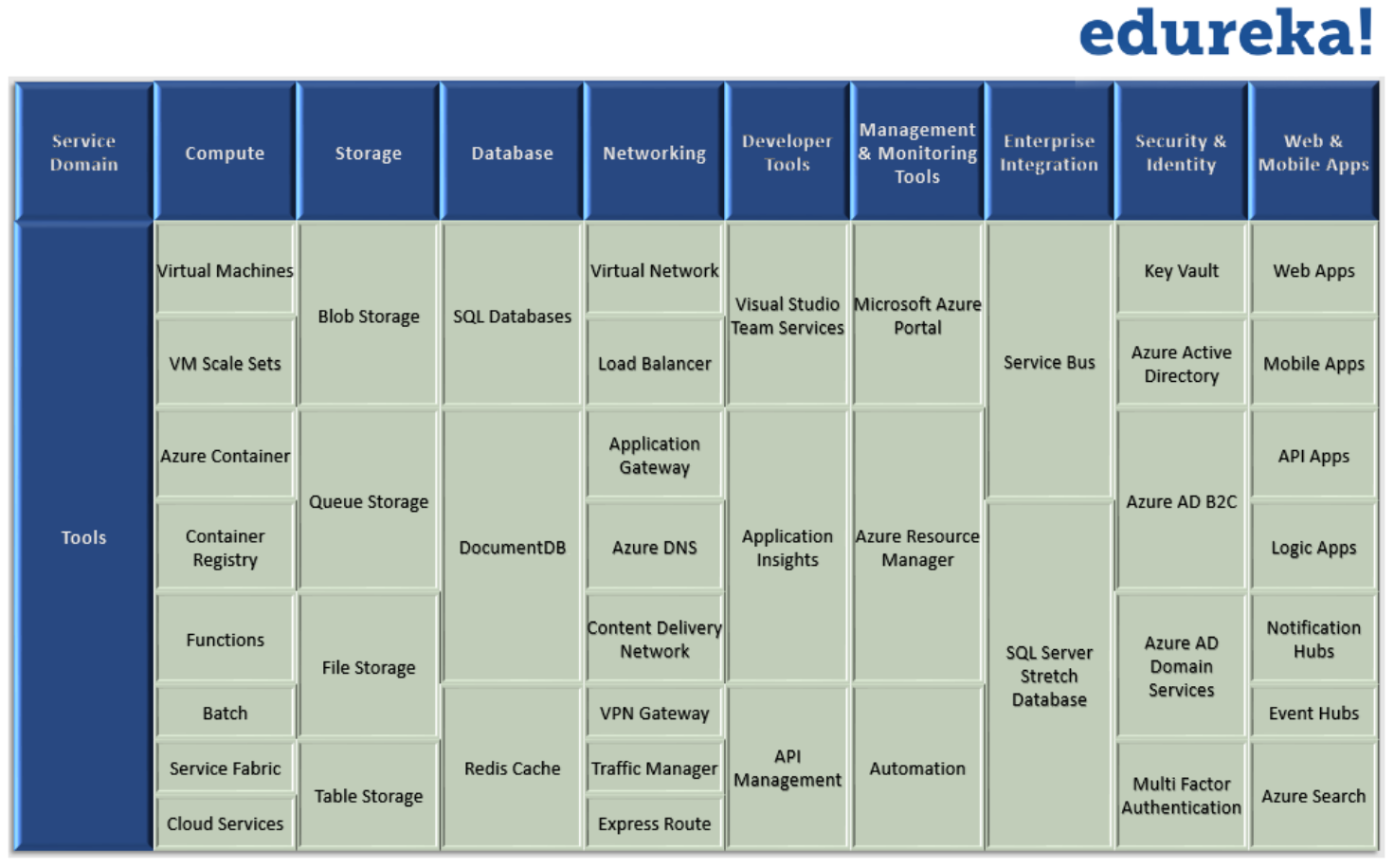Cloud computing is one of the most important technological developments of this century. One of the leading solutions in this domain is Microsoft Azure. Azure is a bundle of several useful tools that make development, operations and deployment convenient on both the developer and consumer sides. Let us now understand what makes Microsoft Azure a necessity and not a luxury for professionals coming from development backgrounds. In this blog, we will go through why Azure is so important for a 21st-century developer and later we will discuss in detail how to get started with Azure with a step-by-step guide.
A closed-source platform, Azure was created by Microsoft to aid in building, testing, deploying and managing applications and services over a global network of data centres managed by the tech giant. The platform provides three major services:
Software as a Service (SaaS)
Platform as a Service (PaaS)
Infrastructure as a Service (IaaS)
Adding to this, Azure supports several different programming languages, frameworks and tools. These include both Microsoft-specific ones and third-party systems and software. Microsoft Azure was initially announced almost a decade ago in October 2008. The first official release was not until two years later, 1st of February 2010. The service was first named Windows Azure and later renamed to Microsoft Azure on the 24th of March 2014. With so many services and solutions bundled into one platform, Microsoft strongly believes that cloud services are the future of technology.
Azure’s Appeal to Developers
The major focus of using a cloud solution like Azure is to provide a better environment for development and hosting that is platform-independent. Azure allows for collaboration between different teams and individuals and makes deployment convenient. Unlike a decade ago, developers no longer need to rely on local storage and systems. Azure comes with a host of services that make it developer-friendly and makes it a charm to use. These services, or resources as they are referred to widely, can be broadly classified into nine categories:
Compute: These tools are used to process data on the cloud by employing powerful processors which serve single or multiple instances at a time, depending upon the requirement.
Storage: This set of resources is used to store data in the cloud. To top it off, Azure gives you the ability to scale storage sizes as and when required.
Database: This set of resources is used to provide reliable relational and non-relational database instances managed by Azure.
Networking: These tools are aimed at providing several networking services which are secure and fast on Azure.
Developer Tools: This constitutes a suite of developer tools and environments that make it easy to write code, collaborate, test, track and ship the final software.
Management and Monitoring Tools: This bundle includes services that are necessary to manage and monitor Azure instances.
Enterprise Integration: These are services that make it seamless to integrate your enterprise architecture into Azure.
**Security and Identity: These are the services that are necessary for user authentication. They also allow limiting access to a specific set of participants on your Azure resources.
Web and Mobile Apps: The name says it all. These services mainly focus on web and mobile application development and deployment.
All the tools and services present in individual suites are listed in the below image:

Each of these tools accounts for a platform that is extensively developer-friendly.
To understand Azure’s advantages, let’s look at an application by one of the leading tech companies in the industry. To implement fast and seamless data processing, LG Electronics started collecting data with Azure IoT Hub, analysing and processing data using Stream Analytic. Datasets were stored within Microsoft SQL. The LG system collects and analyses data in real-time and notifies out-of-range devices immediately.
According to LG, ease of development is realized with a cloud solution. “Microsoft Azure speeded up the service implementation. We completed the service development 2 months faster than expected as Microsoft Azure provides easy and simple development environment,” Jung-Yeol Kim, the Director of ThinkCare, the system development partner of LG Electronics. This reduction in the development period has cut the development cost for the company by 20%.
Development Over Azure
Applications come in many different shapes and sizes. Before you dive into development, you need to analyse and understand what your application is all about. The other factors to keep in mind when deciding where to store your application are the underlying infrastructure and whether your application requires a database at its backend. Once you get that out of the way, you will have a good understanding of what service you need to choose on Azure to make sure your application works seamlessly.
Azure comes with a lot of options. It takes time and experience to understand each type of service and what kind of application that service is capable of building. To make things easier for newbies, Azure offers a free tier option which is crucial to gain insights for detailed development in your cloud development career. Every customer who registers with Microsoft Azure receives the free tier option by default. This will allow you to launch an application on Azure while learning for no money. The more you practice and the more you understand the intricacies of this platform, the better you will get at working with it.
How to Sign-Up on Azure?
This is quite straightforward but let me give you a heads-up so that you don’t get stuck in any of the steps.
Step 1: Go to https://azure.microsoft.com/en-in/free
Step 2: Click on “Create New Microsoft Account” and follow the following steps:
- Enter your email address
- Enter a suitable password
- Click on “Create Account”
Step 4: Verification of email address:
- Enter the verification code sent to the email address
- Click on “Verify”
Step 5: Verification of mobile number:
- Enter your mobile number
- Type the access code received on your mobile phone
- Click “Next”
Step 6: Setting up your account:
- As a new user, Azure gives you $200 as free usage credits
- Fill in the form provided and then click on “Next”
Step 7: Re-verification of mobile number:
- Enter your mobile number
- Select your preference for verification and follow the necessary steps
Step 8: Enter your credit card details.
Step 9: Click on “Agree Conditions” and finally select “Sign up”.
Step 10: Et voila! You are set. Click on “Get Started with Azure Subscription” to begin your cloud journey with Azure.
Now you can start using Azure services with your free credits to learn what each of the services has to offer.
Cloud computing is definitely the future of the IT industry. Every day newer and more advanced applications are being developed and deployed using this amazing technology. A March 2016 Gartner report on Enterprise Application Platform puts Microsoft in the “Leaders” category in its Magic Quadrant. Adding to this, the scope and capability of Azure suggest that it will keep growing for years to come. As we’ve seen in this blog, this is even more relevant for professionals working in the development domain. If you are one of them or would like to get into a future-proofed career path, why not learn Azure this year?
Happy Coding 🤘
